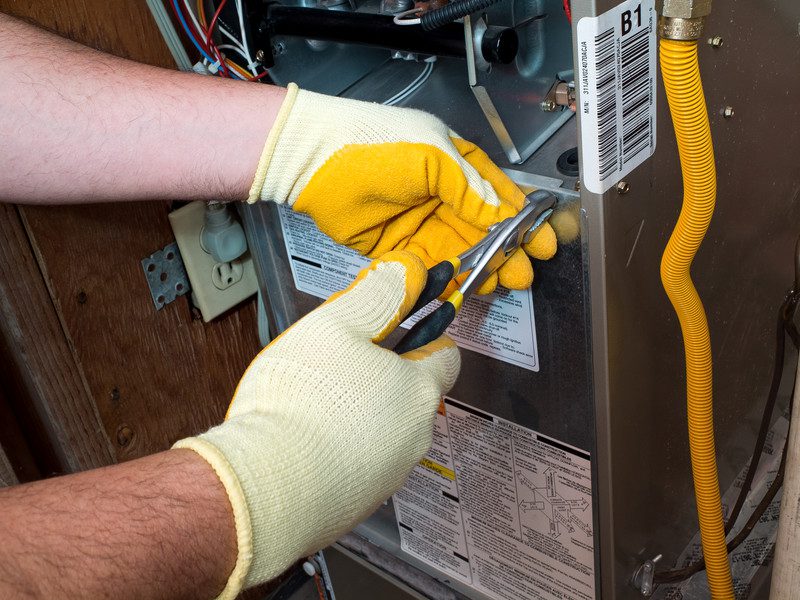What’s New in Home Heating

Home heating technology has seen a range of recent innovations, many of which focus on energy efficiency, eco-friendliness and/or integration with smart home systems. Here are some of ways Jansen Heating & Cooling, a Carrier factory authorized dealer in the Cincinnati area, is helping customers reduce their utility bills and their carbon footprint:
Heat pumps
- Heat pumps have become an increasingly popular alternative to traditional furnaces. Newer models are now able to operate efficiently even in colder climates like Cincinnati. Our heating service repair company has been installing more and more heat pump and hybrid systems.
- Hybrid systems combine a heat pump with a backup gas furnace, allowing the system to switch between electricity and gas for heating, depending on energy costs and the outdoor temperature, which can cut your energy bill and reduce your environmental impact.
Hydronic heating and radiant floor systems
- Radiant heating, especially for floors, has been around a while, but new panel designs are making it more efficient and easier to install. Radiant heat distributes warmth evenly across rooms, and newer models now offer lower-temperature operation, which saves on energy.
- New hydronic systems use small, modular pumps and have integrated smart controls. They use water to heat the home and can be precisely controlled for different zones, reducing overall energy use.
Smart thermostats with AI and remote monitoring
- Smart thermostats have become more sophisticated, with advanced learning algorithms that adapt to your heating habits over time, and optimize for energy efficiency based on usage patterns.
- Smart thermostats with geofencing can detect when household members are nearby and adjust heating accordingly.
- Many new systems offer remote monitoring through apps, and even integrate with home assistants like Alexa and Google Assistant, allowing for easier remote troubleshooting, which can prevent breakdowns and maintain optimal efficiency.
Solar-assisted heating systems
- Solar thermal technology can now be directly integrated with heating systems to provide renewable heating. Solar thermal panels convert sunlight into thermal energy, which can supplement or even replace traditional heating during sunny winter days.
- Combined Photovoltaic-Thermal Systems (PVT) produce both electricity and heat from the same solar panels, a more recent advancement that maximizes energy generation for both home power and heating.
Condensing boilers and high-efficiency furnaces
- Newer condensing gas furnaces and boilers capture and reuse the heat from exhaust gases, which dramatically increases efficiency, sometimes achieving over 95% AFUE (Annual Fuel Utilization Efficiency).
- Micro Combined Heat and Power (CHP) systems generate electricity and heat simultaneously, using natural gas or renewable biogas. While more common in Europe, they are beginning to gain traction here.
Biofuel and renewable heating systems
- Wood pellet and biomass boilers burn renewable biomass, providing a renewable alternative to fossil fuels. They are particularly popular in rural areas and are designed to be highly efficient.
- Research into using hydrogen for home heating is advancing, with several pilot projects underway. Green hydrogen, produced using renewable energy, could one day replace natural gas for heating, making it a zero-carbon solution.
Infrared heating
- Far-infrared panels heaters use far-infrared technology to provide a type of radiant heat that warms objects and people rather than the air. They are quiet, efficient and particularly useful for spot heating.
- Some infrared systems are portable, allowing for efficient heating in specific zones of a home, reducing the need for central heating in less-used areas.
Geothermal energy and ground-source heat pumps
- Vertical and horizontal loop ground-source heat pumps, which use stable underground temperatures to heat and cool, are increasingly popular in new construction and retrofits. They offer extremely high energy efficiency, but require a significant initial investment.
- On a larger scale, some communities are developing geothermal district heating, where multiple homes or buildings share a geothermal heating loop, making geothermal more affordable on a community scale.
For a new HVAC system installation, consider Jansen, a local company with decades of experiencing providing innovative home heating and cooling solutions.
